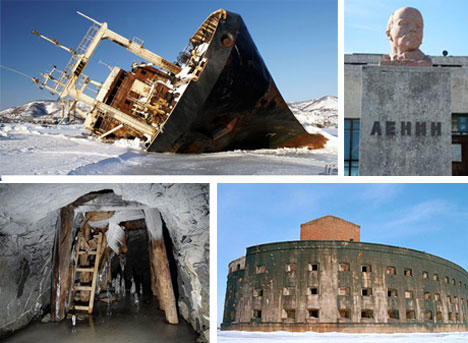
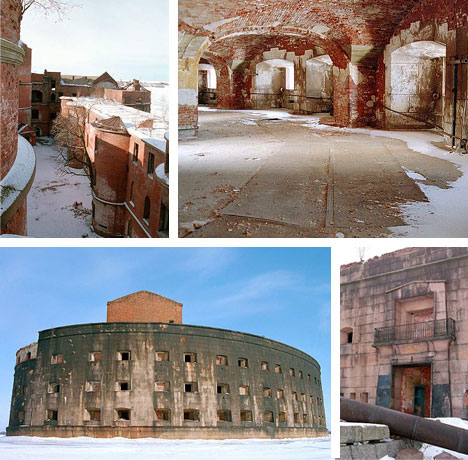
ฐานทัพกลางทะเลที่ถูกทิ้ง:ค่ายทหารอเล็กซานเดอร์ ณ St. Petersburg. สร้างขึ้นในปีค.ศ. 18xx ฐานทัพที่มีปืนใหญ่ 100 ซึ่งหันได้ 360 องศาคอยปกป้อง. หลังจากที่สงครามครีเมี่ยน(1944-1945 ระหว่างเยอรมันรัสเซียในสงครามโลกครั้งที่สอง) สิ้นสุดก็ถูกใช้ในการสะสมอาวุธ
หลังกลายเป็นแหล่งตรวจสอบ ป้อง และ ทดลองเชื้อโรค และฐานนั้นในตอนนี้ถูกทิ้งร้าง เดี๋ยวนี้กลายเป็นสถานที่ท่องเที่ยวที่เปิดไม่เป็นทางการ(ต่อให้เปิดก็ไม่มีใครเข้ามาหรอกมั้ง)
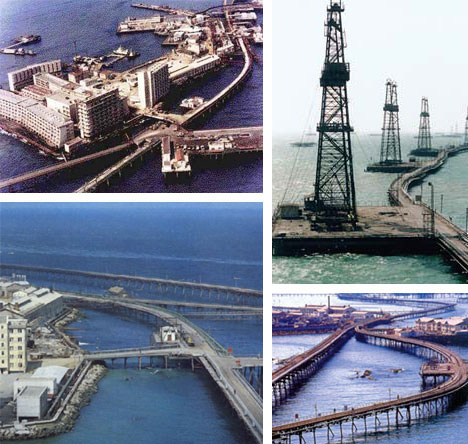
เมืองกลางทะเล: ในปี 1949 น้ำมันเป็นปัจจัยให้สถานที่นี้กลายเป็นเมืองที่แหลม Azerbaijan. ตอนนั้นกลายแหลงปั๊มน้ำมันจากไต้ดิน แต่ไม่ใช่แค่นั้นเพราะมี โดม โรงเรียน ร้านขายของชำ ฯลฯ สร้างอยู่เหนือทะเล.แต่เมื่ีอเรือเข้ามาหรือเรือออกไปทำให้ทะเลมีสารปนเปื้อนบ่อยครั้งทำให้สถานที่นี้คืนให้กับทะเลในที่สุด
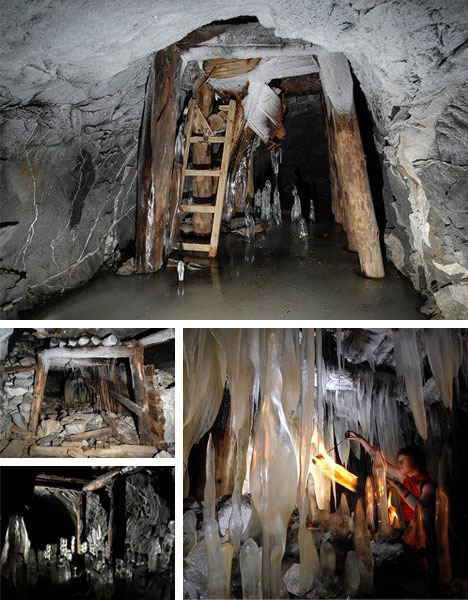
Abandoned Mine Complex: Unlike other Soviet mines in the Kyshtym region the ones in the photographs above at least aren’t radioactive. The ones shown here date back to the days of the Gulags and have been abandoned since the 1960s. A cooling tank explosion around that time contaminated almost 20 square miles around this and other local mines and caused the evacuation of nearly 300,000 residents. This incident was long hidden by the Soviet government before a scientist leaked the information in 1980. Other intrepid urban explorers, however, have braved even the nearby radioactive mines at their own risk.
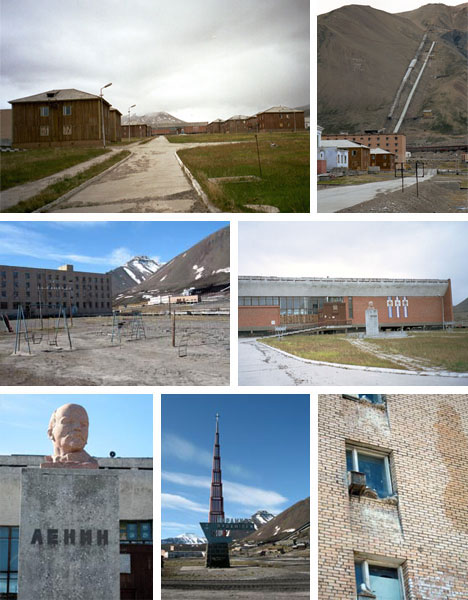
Abandoned Industrial Town: Pyramiden is a classic model Soviet small blue-collar coal-mining town with a long history that was quickly and suddenly snuffed out. In the early 1990s it was concluded that Pyramiden was no longer profitable and its citizens were given a few short hours to pack and leave. Much like Chernobyl the result has been sad but fascinating: virtually everything was left behind from house plants to books on library shelves. Though there are plans to potentially renovate this ghost town for now it provides a picture of local life two decades ago.
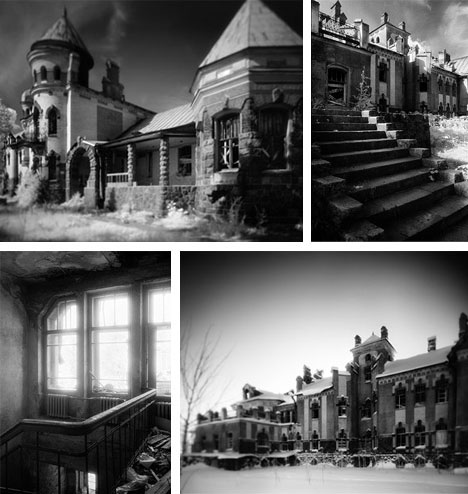
Abandoned Soviet Estate: There are many abandoned estates scattered throughout Russia that are simply too remote to warrant restoration. As photographer Jason Grant points out, though, these are provide in many ways a more real experience of history for those who visit and photograph them. This particular estate in Belogorka survived the revolution and was only moderately damaged by a bomb in WWII. It was subsequently used as a scientific research institute and is now strewn with bottles and chemicals from these last tenants.
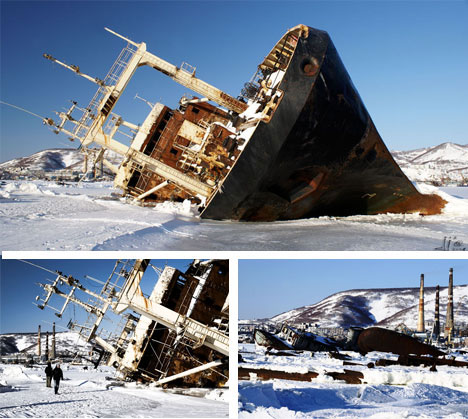
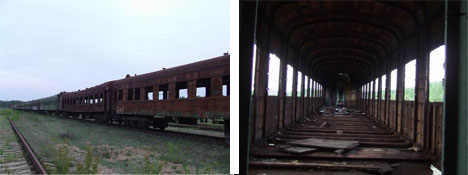
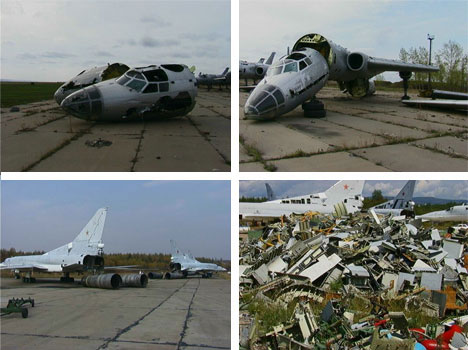
Abandoned Transportation: Throughout Russia and the former Soviet Union one can find a vast number of abandoned air, sea and land vehicles that have simply been left to rust rather than repurposed or recycled. In other parts of the world one would imagine they could find other uses for giant ships, disused fighter jets and entire train networks but here these things seem to fall through the cracks. Figures next to the planes and boats shown above bring home the enormous scale of these abandoned relics of Soviet transportation.
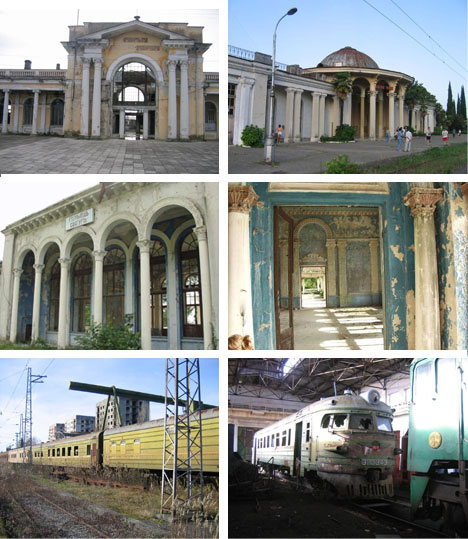
Other Abandoned Areas: The region known as Abkhazia is a semi-independent zone within Georgia in which a great deal of transportation and other infrastructure has been deserted in recent decades due to a lack of funds. Shortly before the collapse of the Soviet Union the region came into conflict with the rest of Georgia as Georgians pushed toward independence from Russia. Today, Russia issues passports for Abkhazians, pays their retirement pensions and provides citizenship to many of the people. Nonetheless, since the fall of the USSR the local budgets have not been enough to maintain many buildings and train networks as illustrated by the images above.



No comments:
Post a Comment